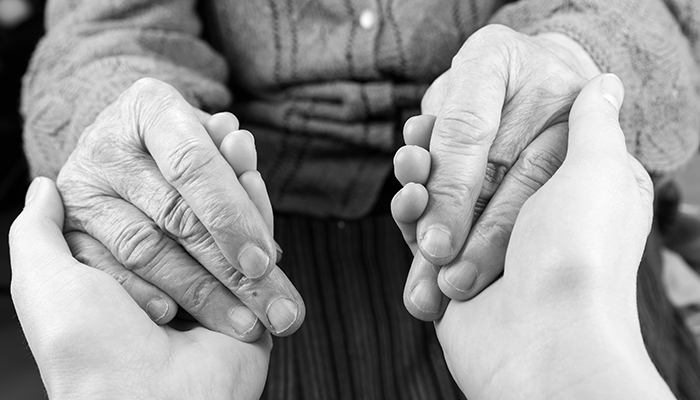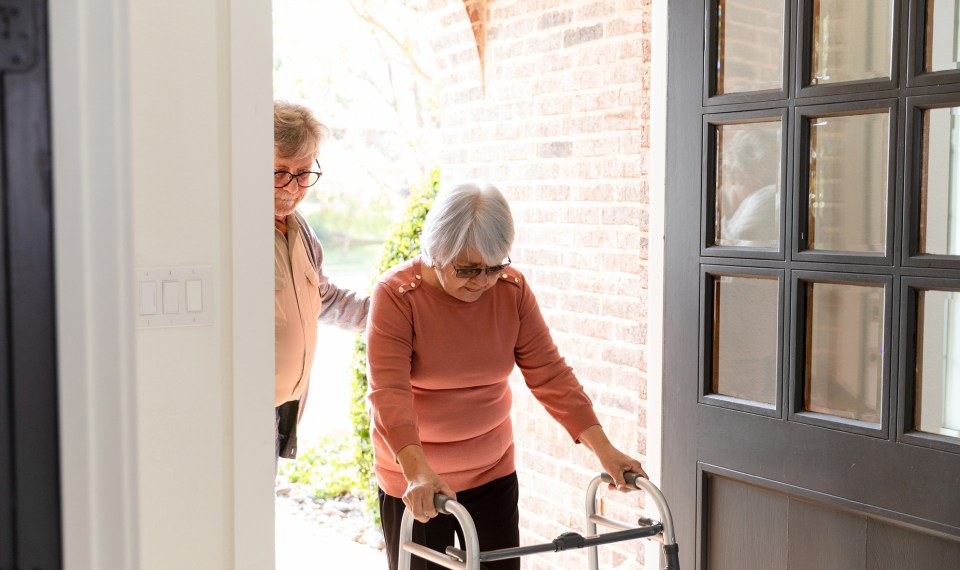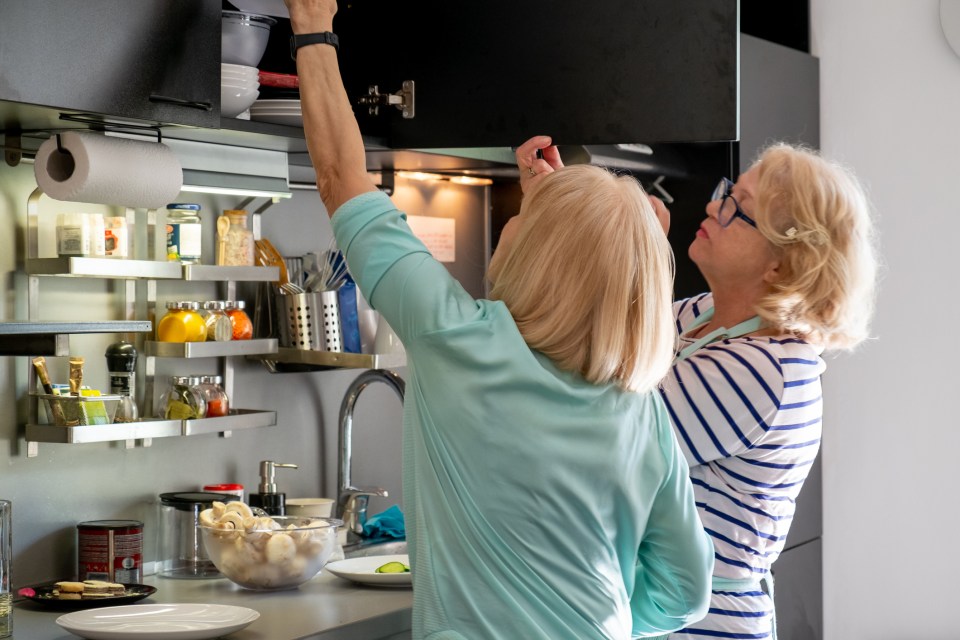The role of the family caregiver is vital to a patient’s recovery, yet it can be a daunting task without the proper preparation and tools.
Bobbie Cochran never realized the heavy burden a caregiver faces, that is until her husband fell, shattering his pelvis. If it weren’t for her daughter, she not sure what she would have done.
After being discharged from Encompass Health Rehabilitation Hospital of Northern Virginia, Patty insisted her parents stay with her, taking leave from work to care for her dad, as well as her mom. When Bobbie needed a break, her daughter was there.
“She was at the hospital around the clock,” Bobbie recalled. “She insisted we come to her house, so she could support both him and me. If I had gone home to our house, it would have been much harder. I relied on our daughter; she was a great source of security.”
Thanks to Patty, Bobbie was able to continue activities she’d enjoyed before Bill’s fall, giving her a break from the strains of being a constant caregiver. She acknowledges, though, that many in her situation aren’t so fortunate.
She’s right.
According to the Bureau of Labor Statistics, there are more than 41 million unpaid caregivers in the U.S., and many of them are aging and struggling with health issues of their own. The demands of caring for a loved one can be trying, leaving the caregiver burnt out and frustrated.
Though there are services that can provide relief to lay caregivers, they are often costly; therefore, not an option for many.
“Caregiver burden is a profound problem in this country,” said Bud Langham, Encompass Health’s home health and hospice chief clinical officer. “It’s a huge issue. One of the main challenges is coping. The caregiver is usually a husband or a wife, someone they planned to grow old with, and then their worlds radically change.”
Providing caregivers with the tools they need is critical to a patient’s success, especially when they transition from the hospital to the home, he added.
A Vital Role in Recovery
Identifying the main caregiver upon admission to the hospital and making them a part of the care team throughout their stay is a must, said Dina Walker, Encompass Health’s national director of case management, to get a patient safely home.
In many states, it’s the law, and in most Encompass Health
rehabilitation hospitals, it’s common practice; upon admission, the patient’s primary lay caregiver is identified and considered a crucial part of the care team.
“There is definitely more emphasis on the caregiver now,” Dina said. “I think there will continue to be more emphasis on the caregiver and who that person is. It takes a special person to be one. They have to have patience and compassion, attention to detail, and they must be trustworthy.”
For many caregivers, the role can become a full-time job, requiring them to administer medical care, though they often have no clinical experience. That’s why including the caregiver at admission and throughout the stay, is so important Dina said, adding that she encourages them to take part in therapy, as well.
The better a caregiver is prepared during an inpatient rehabilitation stay, the better their loved one’s chances are for success at home, said Lori Jarboe, CEO of HealthSouth Lakeview Rehabilitation
Hospital in Elizabethtown, Kentucky.
In the past, Lori said her hospital used to host family training days, but now, she prefers to see caregivers as a part of the care team throughout the length of stay.
“There’s always a lot of anxiety and fear of the unknown,” she said. “I think the earlier the family is involved and stays involved to
understand whatever the disease and process for dealing with it and what they need to do, the better. That way, when they get home, we can take the training wheels off.”
Returning home is often scary for many caregivers. Lori said the presence of an Encompass Health home health agency has made that easier in her market, as a patient can continue their care at home.
The True Test
At home, Bud said, is where the real work for a caregiver begins. In the inpatient setting, patients have round-the-clock supervision, giving caregivers a sense of security. Back at home, they are often on their own.
“In the inpatient setting, everything is kind of sterile, neutral,” he said. “It doesn’t matter if you’re very wealthy or very poor or what kind of support you have, they all have the same bed and bath. When they get back home in their own environment there are more challenges. It may be financial or nutritional, or it may just be the overall burden to provide the care the patient needs.”
Just like in the hospital, Bud said home health clinicians consider the caregiver an integral part of the care team. In addition to setting patient-specific goals, caregiver goals are often set, as well.
The more involved the caregiver, the better chance the patient will be able to stay at home.
However, when a caregiver is not involved or there just isn’t one, Bud said the home may become a dangerous place, one not appropriate for the patient any longer.
“It’s very sad to see – and we see it more than I’d like to admit – when the caregiver is perfectly able but not willing. If the patient is living alone, the care plan has to take a totally different direction.”
That direction can often lead to a nursing home or long-term care facility. That’s why Dina puts so much emphasis in determining who those caregivers are upfront.
She encourages families to work together, giving the primary caregiver a break.
“One of the most successful care plans is when the entire family gets together,” she said. “One person can do this piece, and another can take care of the medications or take them to the doctor.”
It Takes a Village
Dina also scours the community for resources to support both the patient and caregiver once they return home. In that respect, she said, a case manager’s job is much like that of a private detective. “You have to get creative and figure stuff out,” she said.
There are several services that help care for older adults and ease the caregiver burden, such as adult day cares. However, they are often costly and not covered by Medicare. Dina said some personal care services are tax deductible, and Medicare does offer compensation for caregivers, “but it’s really tough to get,” she said.
Often some of the most useful and cost-effective options can be found in communities, churches and non-profits, such as Meals on Wheels.
Technology may also help in easing the burden for caregivers. There are smartphone apps that can track medications and doctor visits. Then there’s the emergence of telemedicine, allowing more patients to take those visits at home.
But perhaps the best way to ease the caregiver burden, Bud said, is to have a plan in place before you or your loved one becomes one.
“I encourage friends and family to get long-term care insurance,” he said. “And I definitely encourage people to sit down with their families and talk about their wishes should things change in their lives. Connect with community resources and stay engaged.”
The content of this site is for informational purposes only and should not be taken as professional medical advice. Always seek the advice of your physician or other qualified healthcare provider with any questions you may have regarding any medical conditions or treatments.



